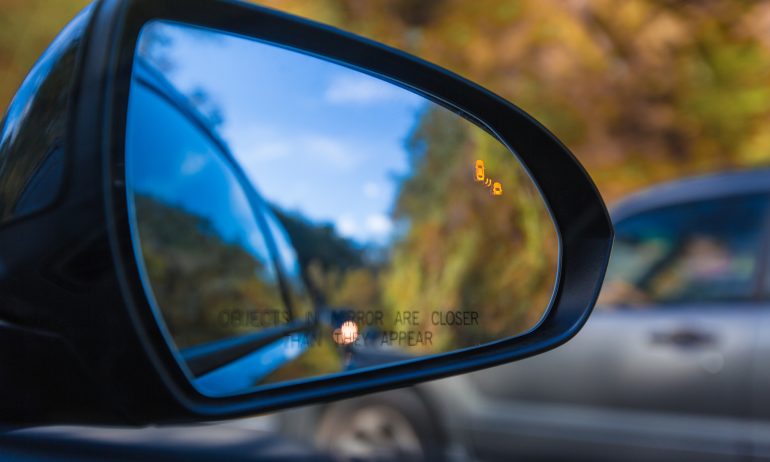Guide to Blind-Spot Monitoring

Many or all of the products featured here are from our partners who compensate us. This influences which products we write about and where and how the product appears on a page. However, this does not influence our evaluations. Our opinions are our own. Here is a list of our partners and here's how we make money.
Blind-spot monitoring (BSM) is an advanced safety feature that alerts drivers when there is a vehicle in a car’s blindspot. BSM is standard in many new car models, although some automakers offer it only as an additional feature sold as a part of a package for an extra cost.
Some manufacturers use different names for BSM — like blind-spot detection, blind-spot information system and others. Even if it’s called something different, the systems all perform the same safety function of alerting drivers to objects in blind spots.
Why is blind-spot monitoring important?
Blind spots are areas around the side-rear of the car that a driver cannot easily see through the rearview or side mirrors. These obstructed areas can make it difficult to spot oncoming cars when changing lanes or merging, which can lead to crashes.
Research shows that blind-spot monitoring is effective in lessening the severity of such lane-departure crashes because it helps drivers change lanes more safely.
How does blind-spot monitoring work?
BSM uses cameras in the side-view mirror and sensors on the rear bumper of a vehicle to detect when there’s a car that might not be visible to a driver. It then alerts the driver with an audible warning or visual indicator in the form of a flashing light on the side mirrors, driver’s window or on the front display. Some BSM systems also alert drivers tactically, with steering wheel vibrations.
Most blind-spot monitoring systems are automatically activated when a car is going above a certain speed, and are therefore optimal for highway use. When activated, BSM issues a warning during instances when: a driver signals a lane change while there’s another vehicle to their rear, a car in the adjacent lane passes or a car approaches from the rear or side. The safety feature is not triggered when a car passes a stationary object like a pole or guardrail, or when another car nears from the opposite direction. Drivers can manually turn BSM off typically by pressing a button on their control panel.
Note that BSM should not be a replacement for drivers turning their heads to look for cars or using their mirrors, as there are some instances when the safety system might not be optimal. For example, while some new car models have alert zones up to 80 feet behind a car’s rear bumper, most BSM systems can typically only detect passing cars directly next to and a few car lengths behind a vehicle. Additionally, blind-spot monitoring may not be able to detect smaller objects like motorcycles or bicycles.

